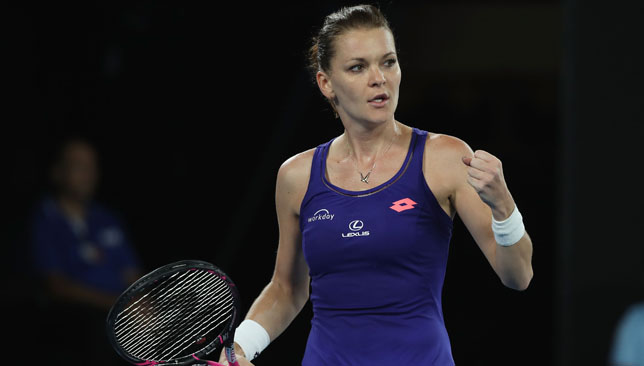
Former world No. 2 Agnieszka Radwanska believes the Grand Slams’ move to revert back to 16 seeds instead of 32 starting the 2019 season is “not a good idea” and has questioned the fairness of the decision.
The 2012 Wimbledon runner-up has had a difficult injury-plagued year and is down to No. 28 in the world rankings after being a constant fixture in the top-10 for most of the past decade.
If the 16-seeds system was implemented for this coming season, Radwanska would not have been seeded at the 2018 Australian Open.
The 28-year-old Pole understands that the reduction of seeds can result in compelling match-ups in the early rounds of a major but she also believes that clashes between high-ranked players at the start of a tournament is something that should be avoided when possible.
“I don’t think that’s a good idea to be honest. I don’t know why they changed that. I don’t know what’s wrong with what we’ve had so far,” Radwanska told Sport360 during a preseason training stint in Dubai recently.
“I think some of the rules are changing because something needs to be changed, even when something is good, they’re still making changes. I think having 32 seeds was good. These are Grand Slams, so why do you have to play someone ranked 17 in the world in the first round instead of the fourth round?
“I’m not sure if that’s fair, especially that you work really hard to be seeded, including those seeded 16 to 32, so I’m not sure that’s a good rule.”
This year, Simona Halep was drawn against Maria Sharapova in the first round of the US Open because the latter had a lower ranking due to her 15-month doping suspension.
The showdown was a high-quality affair that resulted in Halep’s dismissal leaving the tournament without its No. 2 seed from the get-go.
“For sure there will be some good players ranked lower because of something. We’re not machines, so everybody will get injured sooner or later, or get ill, or not playing for some time, so there’s always going to be these kind of matches,” explained Radwanska.
“But if there’s a chance to avoid them playing in the first round, why not having 32 seeds? Maybe that was good for TV and everybody was excited about this kind of first round (Halep v Sharapova). But for them, I don’t think they were happy about that. Even the winner, nobody wants to have that kind of first round.
“There are still so many good players who are very dangerous for the first round without having that high of a ranking, so you can still have tough first rounds with 32 seeds. It shouldn’t be like this.”
Other changes set to place at the Grand Slams include the introduction of a shot clock on court to make sure players do not exceed taking 25 seconds between points.
The shot clock will be used starting next month’s Australian Open.
“I remember playing IPTL and there was the clock beeping and I was rushing, it was tough because in your mind you have that ticking, something around your head somewhere. That was really stressful,” said Radwanska, recalling her experience from the team exhibition league.
“But I know that a lot of players take more time and some chair umpires didn’t care or didn’t do anything about it, it was weird and for sure not fair. We’ll see. It’s always hard to tell from the couch, we can comment on that when we’re there on the court, so we’ll see.”
One thing often debated but still not introduced at the majors is on-court coaching. The US Open experimented with the concept during the qualifying rounds this year, so did the Next Gen ATP Finals in Milan last month.
The WTA allows on-court coaching, but the ATP and Slams don’t.
“I was fine without it,” said Radwanska. “That’s also something they changed because they wanted to change something. I think if there’s something like this, it should be everywhere.
“When you don’t have it at the Grand Slams, the most important events of the year, why have it somewhere else? There’s always a good and bad side.
“I’m not really that much into the coaching, also because I’m not used to it. There are some players that use it all the time, so probably they really feel the difference when they’re alone at the Slams and can’t call the coach, but me, I’m so used to playing without that.”